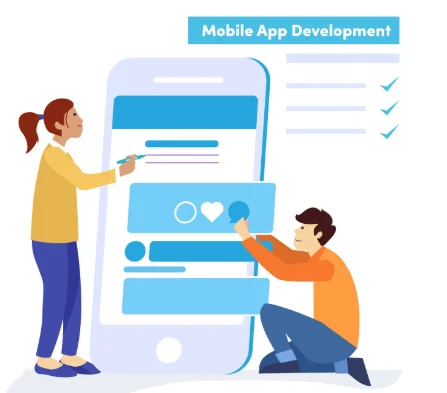
Generate Customer Support Response Templates
Businesses often spend a lot of time answering the same questions from customers. AI helps create quick, consistent replies for these common inquiries. This means every customer gets a similar, helpful answer, making the support process much more efficient.
Using templates for frequent issues, like shipping updates or product details, ensures that all necessary information is always included. This approach helps maintain a steady brand voice across all communications. Businesses can set up different templates for various types of customer interactions.
To make these templates truly effective, businesses should focus on their most common questions. They can use placeholders for specific details like customer names or order numbers. Regularly checking and updating these templates based on new information or feedback keeps them relevant and useful.
Craft Personalized Email Outreach
Sending emails that feel personal really helps connect with people. Generic messages often get ignored, but AI can help make each email feel like it was written just for one person. This makes the communication much more impactful.
AI tools can look at past purchases, website visits, or even browsing history to figure out what someone might like. Then, they help write emails with relevant product suggestions, special offers, or helpful content. This makes the message much more likely to be opened and acted upon.
For good personalized emails, businesses should use clear data about their customers. They can include things like the customer’s name, past interests, or even local events. This careful approach improves how customers feel about the business and its messages.
Analyze Customer Feedback for Insights
Understanding what customers think is important for any business looking to improve. Feedback shows what’s working well and what areas need fixing. Going through large amounts of comments and reviews manually can be a huge task.
AI tools can read through vast quantities of reviews, survey responses, and social media comments very quickly. They can spot common themes, recurring problems, or general feelings, like if many people are happy with a product or if a service issue keeps coming up. This helps businesses see the big picture of what their customers are saying.
From this analysis, businesses can find out which products are most popular or what parts of their service need attention. These insights help businesses make better decisions about their products and how they serve people. This kind of analysis helps improve future customer interactions by addressing real customer needs.
Businesses that regularly analyze customer feedback with AI often find new ways to improve their services and products, leading to happier customers and better business outcomes.
Enhance Content Creation and Marketing
Develop Engaging Social Media Posts
AI tools can significantly help businesses with their social media presence. They assist in generating fresh ideas for posts and drafting compelling captions. This support frees up time for other important marketing activities.
AI can suggest relevant hashtags to increase visibility. It also helps tailor messages for different platforms and audiences. Businesses can quickly produce a steady stream of engaging content.
Here are some ways AI helps with social media:
- Brainstorming post ideas based on trends.
- Drafting captions and calls to action.
- Suggesting optimal posting times.
Build SEO-Optimized Content
Creating content that ranks well on search engines is a big job. AI can analyze keywords and suggest topics that attract organic traffic. It helps structure articles with proper headings and meta descriptions.
This technology also identifies semantic keywords to improve search visibility. It can even help draft sections of articles, making the content creation process faster. This means more time for refining the overall message.
AI tools are becoming standard for businesses looking to improve their online presence. They provide a solid foundation for building effective digital strategies. This helps companies reach a wider audience.
Create Presentation Outlines and Speaker Notes
Putting together a good presentation takes a lot of effort. AI can generate detailed outlines based on a given topic and audience. It helps organize thoughts into a logical flow.
The tools also assist in drafting speaker notes for each slide. This ensures presenters stay on message and cover all key points. It makes preparing for important talks much less stressful.
AI can suggest visual aids or data points to include. It helps refine the overall narrative for maximum impact. This support is invaluable for anyone needing to deliver clear, concise information.
Optimize Business Operations and Scheduling
AI tools are changing how companies handle their daily work. They help make things run more smoothly and efficiently.
AI tools are changing how companies handle their daily work. They help make things run more smoothly and efficiently. Websites like GodofPrompt.ai offer practical AI prompt ideas for small business owners looking to automate tasks, brainstorm content, or streamline customer communication.
This means less time spent on routine tasks and more time for important decisions, improving overall business operations.
Automate Meeting and Calendar Management
Managing calendars and setting up meetings can take a lot of time. AI can look at everyone’s availability and suggest the best meeting slots. It can also send out invites and reminders automatically. This helps avoid endless email chains and makes scheduling much simpler.
- Find optimal meeting times across different time zones.
- Send automated invitations and follow-up reminders.
- Identify and flag potential scheduling conflicts.
Generate Project Timelines and Task Assignments
Planning projects often involves breaking down big goals into smaller steps. AI can help create detailed project timelines quickly. It can also suggest who might be best for each task. This makes project setup much more efficient for teams.
Streamline Data Analysis and Reporting
Companies collect a lot of data every day. AI can quickly process this information and find important patterns. It can then create clear reports that show key insights. This helps leaders make better choices for their business operations.
AI can turn raw numbers into easy-to-understand summaries. This allows teams to quickly grasp performance and identify areas for improvement. It takes the guesswork out of understanding complex data sets.
Leverage AI for Strategic Business Growth
Businesses can use AI to make smart choices for the future. It helps them see new chances and plan for what’s next. AI prompts guide the process, making it easier to find important information.
Conduct Market Research and Competitor Analysis
AI tools help businesses look at big amounts of market data quickly. They can spot trends and see what competitors are doing. This quick look at the market helps businesses stay ahead. AI prompts can ask for specific details, like competitor pricing or new product launches. This makes market research more direct.
Identify Customer Segments for Growth
AI helps businesses sort through customer information to find different groups. It shows who buys what and why. AI prompts can ask the system to find customers with certain habits. This way, businesses can focus their efforts on the most promising groups for growth.
Businesses often struggle to see clear paths for expansion. AI provides a way to cut through the noise and pinpoint where the best opportunities lie. It turns raw data into simple, useful insights for decision-makers.
Set Clear, Data-Driven Team Goals
AI assists in creating goals that are based on real numbers. It helps teams know exactly what they need to achieve. These goals give everyone a clear direction for their work. AI prompts can help draft these goals, making sure they are specific and measurable.
- Define the desired outcome.
- Establish how success will be measured.
- Set a realistic timeframe for completion.
Mastering AI Prompt Implementation
Getting AI tools to work for a business means more than just having them. It requires a thoughtful approach to how AI prompts are used day-to-day. Businesses need to pick the right tools, adjust prompts for their specific needs, and set clear rules for everyone. This helps make sure the technology actually helps, instead of just being another thing to manage.
Selecting the Right AI Tools for Your Business
Choosing the correct AI tools is a big first step for any business looking to use AI prompts. Not all tools are the same, and what works for one company might not work for another. Businesses should look for tools that fit their budget and can connect with their existing systems.
Consider what tasks you want to automate or improve. Some tools are better for writing, others for data analysis, and some are more general. Picking the right platform makes a big difference in how useful AI becomes.
- Evaluate current business needs and pain points.
- Research different AI tools and their main features.
- Check for compatibility with existing software.
- Consider the cost versus the potential benefits.
Customizing Prompts for Specific Goals
Generic AI prompts often give generic results. To get the most out of AI, businesses must tailor their prompts to match their exact goals. This means being very specific about what information is needed or what kind of output is expected.
For example, asking for “marketing ideas” is okay, but asking for “five social media post ideas for a new eco-friendly cleaning product, targeting millennials on Instagram, with a call to action to visit our website” will get much better results. The more detail, the better the AI can perform.
When creating prompts, think about the context, the desired format, and any specific constraints. This helps the AI understand the task fully.
Establishing Guidelines for Effective Prompt Usage
Once tools are chosen and prompts are being customized, setting clear guidelines for their use is important. This helps maintain quality and consistency across teams. Everyone should know how to use AI prompts effectively.
Clear instructions prevent misuse and ensure that AI outputs are reliable. These guidelines can cover when to use AI, how to phrase prompts, and what to do with the AI’s responses. It’s about making sure everyone is on the same page.
- Define acceptable uses for AI prompts.
- Provide examples of good and bad prompt phrasing.
- Explain how to review and edit AI-generated content.
- Set expectations for data privacy and security when using AI.
Wrapping Up: Making AI Work for You
So, we’ve looked at how simple AI prompts can really change how businesses get things done. Instead of getting bogged down in tasks that take forever, you can use these instructions to get AI to help out. This means less time spent on repetitive stuff and more time for actually growing your business and connecting with customers. It’s not about being a tech wizard; it’s about using tools that are pretty easy to get the hang of. Start with one or two tasks, see how it goes, and then build from there. You might be surprised how much smoother your day-to-day operations become.

What Makes a Key West Spearfishing Company Stand Out From the Competition

A Comprehensive Guide to Performance Marketing Platforms and Tools

Data Automation Tools for Modern Businesses

Accelerating drug discovery through the DEL-ML-CS approach

AI in Marketing Is No Longer a Buzzword — It’s the Strategy

Is Singapore's 'Smart Nation' Initiative Making Renting Smarter, or Just More Expensive?

FSI Blogs US: Complete Guide, Insights, and Relevance

10 Things US Clients Expect from a Mobile App Development Partner









